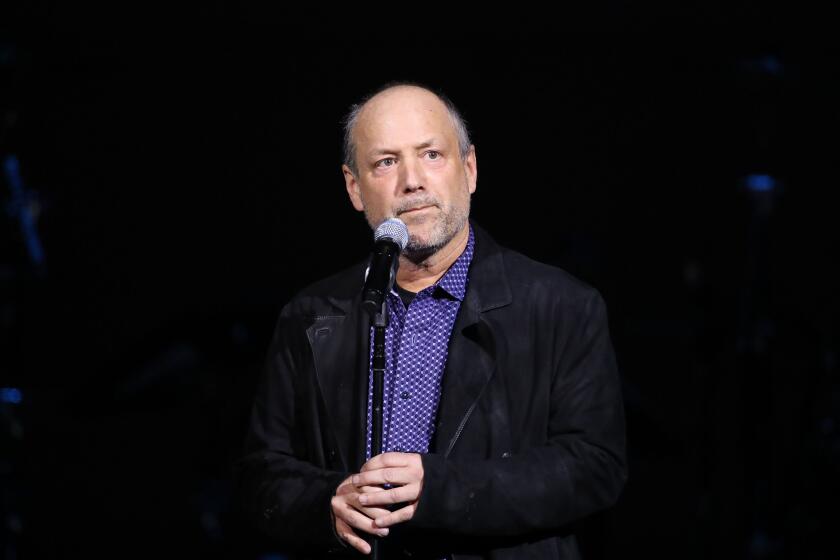U.S. Economy Ignoring Dire Predictions by Recessionists
- Share via
The surest way to avoid an economic recession, it appears, is to have plenty of professional economists convinced that such a downturn is imminent.
“U.S. Recession in 1996,” Boston-based Wainwright Economics declared in a December 1995 newsletter; “50% Chance of Recession,” warned Jerome Levy Economics Institute early in January; “Debt-Ridden Consumers Will Slow 1996 Growth,” a Knight-Ridder Financial survey of economists concluded Jan. 5.
The year is still young, but the recessionists so far are on a strict diet of crow. The government’s report last Thursday on first-quarter gross domestic product put real growth at an annualized 2.8% rate, nearly twice the anemic 1.5% average estimate of economists in Eggert’s Blue Chip Consensus newsletter.
And Friday’s report on April employment, while showing virtually no net rise in jobs after the stunning February and March gains, still put the unemployment rate at a 14-month low.
That doesn’t sound very recessionary to Wall Street, which sent bond yields to one-year highs Friday on fears that economic growth now is so robust that another credit-tightening wave by the Federal Reserve Board is all but certain--sooner rather than later.
But then, this is the same bond market that gleefully bought into economists’ recession forecast in January, pushing yields to near two-year lows. If bonds didn’t have a clue then, should they now?
The same might be asked of the economics profession. How could the U.S. economy take so many analysts by surprise this year?
Certainly, the government may ultimately revise its 2.8% first-quarter growth figure downward. Revisions are commonplace, especially in the case of the GDP figure, which in its early incarnations is a product of estimates as well as hard numbers.
But even with revisions, “you’re not going to revise away the economy’s strength,” said David Blitzer, economist at Standard & Poor’s Corp. in New York. He, too, was expecting a weaker economy in the first quarter. But after the March employment report issued April 5, he said, “I decided this thing was for real.”
Hunting for ways to explain exactly why their profession stumbled, economists naturally offer some interesting ideas.
William Dudley, economist at Goldman, Sachs & Co. in New York, believes that many of his peers had the “basic premise” wrong: They thought that monetary policy, meaning the Fed’s hold on credit in the economy, was still officially tight because the Fed had only begun to reverse its interest rate hikes of 1994.
But if you believed that money was actually fairly easy to come by even though rates were up from their 30-year lows of 1993, then a recession (i.e., at least two consecutive quarters of a shrinking economy) seemed unlikely, Dudley said. Money, after all, is what greases the economic wheel.
*
At brokerage A.G. Edwards Inc. in St. Louis, economist Ray Worseck thinks the globalization of the U.S. economy, and the spread of technology, are making it more difficult to forecast. Demand for goods and services from China, interest rate shifts in Japan, productivity gains from computers--all of these things increasingly affect U.S. business activity but are far less focused-upon than Fed policy, Worseck said.
Perhaps the most obvious--and honest--explanation comes from Sung Won Sohn, economist at Norwest Corp. in Minneapolis. “A lot of econometric models simply extrapolate the past,” he said.
Because fourth-quarter economic growth was so slow, with GDP rising at a mere 0.5% real annualized rate, it seemed logical to many economists that the first quarter also would be slow, if not slower, Sohn said.
What the experts should have allowed for was more of an economic bounce after the much-ballyhooed “soft landing” of 1995. The Fed, by doubling short-term interest rates in 1994, helped slow the economy and brought it down relatively gently. That made for a “growth recession” in 1995, Worseck said--setting up a rebound this year. Nothing terribly shocking about recovery following slowdown, after all.
*
Yet some analysts still won’t give up the full-fledged recession forecast for 1996. Don Schneiders, vice president at Wainwright Economics, contends that the Fed’s boost in interest rates in 1994 was more than enough to cause recession, judged in historical context.
“We’re not saying we’re in recession now--of course not,” Schneiders said, reflecting on recent economic data. But there are almost three full quarters yet to go this year, he reminds. In any case, “We aren’t revising our forecast. For us, 1996 should have been a recession even if it isn’t one,” Schneiders said.
One thing is clear: If the economy continues to grow faster than expected this year, the U.S. consumer must get much of the credit. Consumer spending accounts for about two-thirds of GDP. As the GDP report Thursday confirmed, the pace of spending was healthy in the first quarter, defying skeptics who have been arguing that the typical consumer doesn’t have the financial wherewithal to do much spending.
In fact, some analysts argue that most people really don’t have the wherewithal to spend--so they’re borrowing massively to do so.
Jim Grant, editor of Grant’s Interest Rate Observer newsletter in New York, calculates in his latest letter that “consumers incurred an extra 84.6 cents of installment debt for every additional dollar they spent” in the fourth quarter. He also notes that consumer bankruptcies nationwide rose last year after two years of decline and that installment loan and mortgage delinquency rates are on the rise.
What Grant fears is that consumer spending is essentially running on fumes, setting the economy up for a much-nastier-than-usual recession when one finally arrives and the “debt bomb” explodes.
But many economists argue that Grant’s reasoning is flawed. “What’s important isn’t the absolute level of debt--it’s the debt service,” said David Lereah, economist at the Mortgage Bankers Assn. in Washington. In other words, what matters is a consumer’s monthly debt payments relative to monthly income.
And on that count, the consumer is far from stretched, Lereah and others maintain. “We’re not even near the peak of 1990-1991” in terms of debt payments as a percentage of disposable income, Lereah argues--although exactly how to measure that percentage is a matter of disagreement among economists.
What’s more, the consumer--and the economy--could be bailed out of potential debt troubles if consumers’ real incomes rise more than expected this year, assuming employers share more of the wealth. Indeed, the April employment report Friday showed a surprising spurt in average hourly earnings for the month.
*
But that earnings news, of course, just made life worse for the bond market Friday. The 30-year Treasury bond yield jumped to a 12-month high of 7.11%, up from 6.79% a week earlier.
The bond market now seems convinced that either the economy is too strong, guaranteeing that the Fed will officially boost rates again, or that inflation will rise significantly with consumers’ rising incomes, or both.
As noted earlier, however, the bond market’s record of forecasting economic (and inflation) trends over the last few years has been spectacularly dismal. It is forever overreacting, in turn influencing economists’ forecasts.
The stock market, on the other hand, has been far more accurate a predictor of the economy all through the 1990s. And what stocks’ rally appears to be saying this year is that despite the surge in bond yields, economic growth will continue, but not at a pace that threatens to send inflation spiraling or bring on an overheated condition that will lead to a bust.
Greg Smith, strategist at Prudential Securities in New York, puts it this way: “It’s the forecasters’ forecasts that are volatile, not so much the economy.”
More to Read
Inside the business of entertainment
The Wide Shot brings you news, analysis and insights on everything from streaming wars to production — and what it all means for the future.
You may occasionally receive promotional content from the Los Angeles Times.










